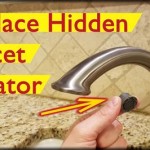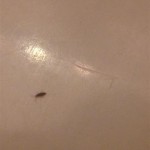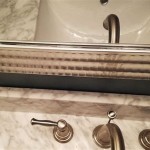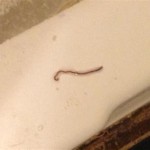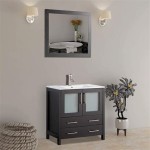How To Clean Bathroom Sink Drain Without Removing Stopper
A clogged bathroom sink drain is a common household nuisance. While removing the stopper is often recommended for a thorough cleaning, several effective methods allow for drain cleaning without this sometimes-complex disassembly. These methods rely on readily available tools and cleaning agents to dislodge hair, soap scum, and other debris contributing to slow drainage.
One of the simplest initial steps involves using a combination of boiling water and baking soda. Boil a kettle or pot of water. While the water heats, pour approximately half a cup of baking soda down the drain. Once the water reaches a rolling boil, carefully pour it down the drain. The hot water helps to melt soap scum and grease, while the baking soda acts as a mild abrasive and deodorizer. This combination can often dislodge minor clogs.
A similar method utilizes baking soda and vinegar. Start by pouring half a cup of baking soda down the drain. Follow this with one cup of white vinegar. The combination of baking soda and vinegar creates a fizzing chemical reaction that can help break down clogs. Allow the mixture to fizz for approximately 30 minutes before flushing the drain with hot water.
For more stubborn clogs, a bent wire hanger can be an effective tool. Straighten a wire coat hanger and bend one end to create a small hook. Carefully insert the hooked end into the drain opening, being careful not to scratch the sink's surface. Use the hook to fish out hair and other debris that may be obstructing the drain. This method requires patience and careful maneuvering but can significantly improve drainage without removing the stopper.
Another readily available tool for clearing drain clogs is a plunger. Ensure there's enough standing water in the sink to cover the cup of the plunger. A wet rag can be placed over the overflow drain to create a better seal. Place the plunger cup over the drain opening and apply firm, consistent plunging motions. The up and down movement creates suction that can dislodge the clog. After several plunging attempts, check if the water drains freely. Repeat the process if necessary.
A plumbing snake, also known as a drain auger, provides a more robust solution for deeper clogs. A plumbing snake is a flexible cable with a coiled end that can be inserted into the drain. Rotate the handle of the snake as you feed it into the drain. The coiled end will navigate through bends in the pipe and break up or retrieve the clog. Once the snake reaches the obstruction, continue rotating to break it up or retract the snake to pull the clog out. This method is particularly effective for hair clogs.
Commercial drain cleaners can be used as a last resort, but caution is advised. These cleaners contain harsh chemicals that can damage pipes if used improperly. Always follow the manufacturer's instructions carefully and ensure adequate ventilation in the bathroom. Wear gloves and eye protection to prevent contact with skin and eyes. Avoid using commercial drain cleaners in conjunction with other cleaning methods, as this can create dangerous chemical reactions.
Preventative measures can significantly reduce the frequency of clogged drains. Install a drain strainer to catch hair and other debris before they enter the drain. Avoid pouring grease or oil down the sink. Periodically flush the drain with hot water and baking soda to help prevent the buildup of soap scum and grease. These simple practices can keep the drain flowing freely and minimize the need for more intensive cleaning methods.
Regular maintenance and prompt attention to slow drainage can prevent clogs from escalating into more serious plumbing problems. By employing these readily available tools and techniques, maintaining a clear and functional bathroom sink drain is achievable without the need to remove the stopper.
Different stoppers operate in different ways, and some may require removal for effective cleaning if the clog is persistent or located beneath the stopper mechanism itself. If these methods are ineffective, consulting a professional plumber may be necessary. A plumber has the expertise and specialized tools to address more complex drainage issues.
Understanding the various methods available allows individuals to choose the most appropriate approach based on the severity of the clog and the tools at hand. While these methods are generally effective, some clogs may require professional intervention. Recognizing when to seek professional assistance can prevent further damage and ensure a properly functioning drainage system.

3 Ways To Clean A Bathroom Sink Drain Wikihow

5 Natural Ways To Unclog A Bathroom Sink Hiller How

3 Ways To Clean A Bathroom Sink Drain Wikihow

How To Unclog A Slow Running Bathroom Sink Drain 10 Options

How To Clear A Clogged Drain Reviews By Wirecutter

How To Unclog A Sink The Right Way

How To Unclog A Slow Running Bathroom Sink Drain 10 Options

How To Clean A Clogged Sink Remove Stopper

How To Unclog A Bathroom Sink Our Oily House

3 Ways To Clean A Bathroom Sink Drain Wikihow
Related Posts
